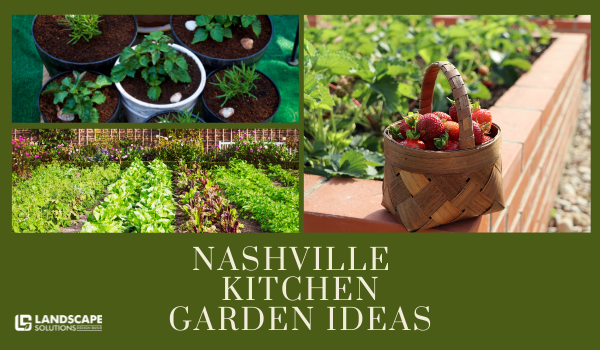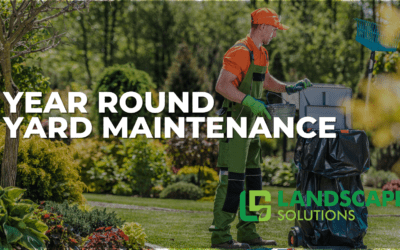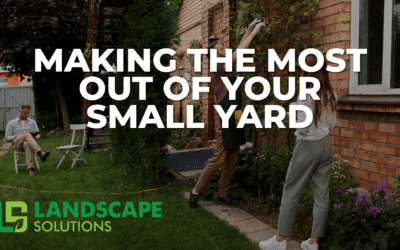
A kitchen garden is the perfect way to get fresh, healthy produce right at your fingertips. Not only does it provide you with delicious ingredients for your favorite recipes, but it’s also a great way to get some exercise and enjoy some outdoor time in the process. Many people find gardening relaxing, which can help reduce the stress of our daily lives.
In this article, we will discuss the basics of designing, planting, and maintaining a kitchen garden. So whether you’re a first-time gardener or an experienced green thumb, read on for some tips that will help you create a thriving kitchen garden!
Types of Kitchen Gardens
There are many ways to design your kitchen garden, and the type you choose will depend on the space you have available as well as your personal preferences.
Those with very limited space find container gardening to be a great way to grow vegetables and herbs. This type of garden can be created on a balcony, deck or patio, and you can use pots, barrels or other containers to grow your plants.
If you have plenty of space, you might choose to create a traditional in-ground garden. This will require more work in terms of preparing the soil, but it will give you more flexibility over container gardens in terms of plant selection.
Our favorite option is raised beds. Raised beds are a great choice for most homeowners. Incorporating raised bed kitchen gardens with your overall landscaping design can provide a beautiful, functional and cohesive look to your outdoor space.
Getting Started
No matter what type of garden you choose, it’s important to start with high-quality soil. This will provide the foundation for healthy plants that are able to withstand pests and diseases.
For those who are creating a container garden, pre-mixed soil can be put in each pot, giving each herb and plant an ideal place to grow.
An in-ground garden requires a lot more work. This garden needs to be tilled to a depth of about eight inches. This is done with a shovel or a rototiller. Once the soil is loosened, organic matter such as compost or manure is mixed in to help improve drainage and aeration while also providing nutrients for your plants.
Before digging in the ground, it is important to discover where any utilities or sprinkler lines are. Professional landscapers can help. They know how to check for underground dangers and have the right equipment and knowledge of plants and soil to get your in-ground garden off to a great start.
Raised beds require the most prep work of all. Hiring professional landscapers to design and create your raised bed garden will ensure you have solid structures, appealing design, and the best soil mix for your kitchen garden. Working with a professional landscaper can give your garden a jumpstart -leaving the hard work of designing, creating and preparing to the pros and the satisfaction of growing and harvesting to you.
Now that we’ve covered the basics of kitchen gardens, let’s talk about what to plant.
What to Plant in Your Kitchen Garden
One of the great things about having a kitchen garden is being able to grow whatever fruits, vegetables or herbs you like.
If you’re not sure what to plant, consider what fruits and vegetables you and your family eat on a regular basis. Do you love salads? Then consider a variety of lettuces, tomatoes, cucumbers, and onions. (Pro Tip: if you cut the lettuce at ground level and leave the roots below ground, you’ll soon have a new head of lettuce to harvest!) Are you into spicy foods? Why not “grow” salsa? Tomatoes, onions, jalapeños, and maybe even cilantro would be great choices. Is comfort food more your thing? How about growing some potatoes?
Some fruits and vegetables that are well-suited for kitchen gardens include (but are not limited to):
- Peppers
- Eggplants
- Cabbage
- Cauliflower
- Broccoli
- Brussels Sprouts
- Asparagus
- Kale
- Peas
- Squash
- Green Beans
- Radishes
- Carrots
- Spinach
- And More!
Another consideration is this: different fruits and vegetables have different requirements in terms of soil type, amount of sunlight and water they need. For example, tomatoes need full sun and well-drained soil, while potatoes prefer partial sun and moist soil.
Some fruits and vegetables are annuals, which means they only live for one growing season. Others are perennials, meaning they will come back year after year with proper care.
While fruits and vegetables are obvious choices for a kitchen garden, don’t forget about herbs! Many herbs are quite easy to grow and can be used in a variety of recipes. Plus, they add a nice touch of greenery to your space.
As far as herbs go, some of the most popular options include basil, oregano, rosemary, sage, thyme and parsley. But there are many other varieties to choose from. If you’re not sure where to start, try picking a few that you know you’ll use often in cooking.
Be sure to consider how much time you have for maintenance. Some fruits and vegetables need more care than others. For example, tomatoes need to be pruned and staked, while potatoes only need to be watered and fertilized occasionally. But none want to compete for space and nutrients with weeds.
Location and Layout
The location of your kitchen garden is important because different fruits and vegetables need different amounts of sunlight. Most fruits and vegetables need at least six hours of sunlight to grow properly, but some require less. Perhaps you need a location that offers both full and partial sun. Seeking the advice of a professional landscaper can make this part of the job easy.
You should plan your garden’s layout in advance to be sure you put the right plants in the best possible place. And don’t forget to put markers in the ground so you know what’s growing!
Maintaining Your Garden
Maintaining your kitchen garden is relatively simple as long as you stay on top of things. First of all, keep an eye out for pests and diseases that could affect your plants. If you see any signs of trouble, consult a gardening guide or speak to a local professional for advice on how to treat the issue. Secondly, make sure to keep your plants well-watered and fertilized. Lastly, don’t forget to keep the weeds at bay!
Harvesting is one of the most rewarding aspects of gardening! Fruits and vegetables can be harvested when they’re ripe and ready to eat. This will vary depending on the type of plant, but you can usually tell when fruits and vegetables are ready by their color and/or size. Once you’ve harvested your bounty, enjoy it fresh from the garden or preserve it for later by freezing, pickling or canning.
We’re ready to help you design, prepare, and create your perfect kitchen garden. Give us a call today to get started!



